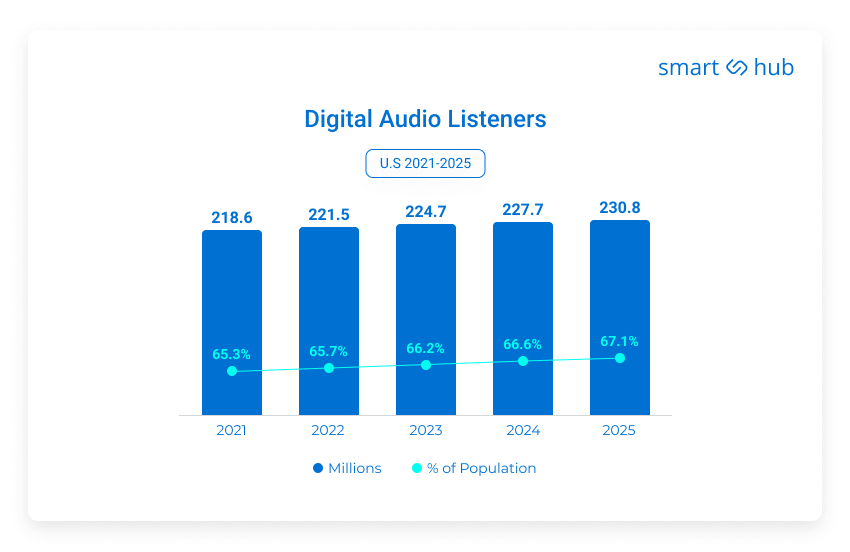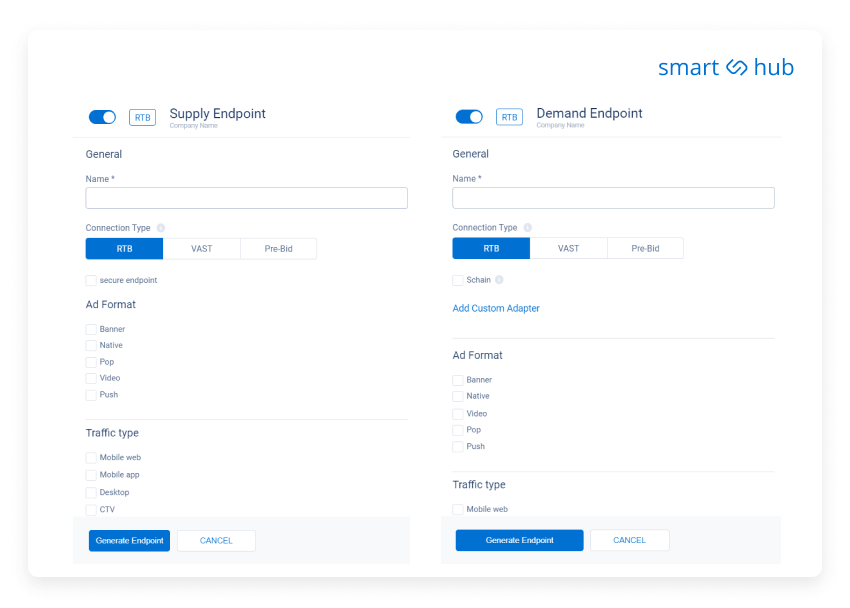Audio Ads on SmartHub: 3 Truths You Should Know About the New Format
 by Roman Vrublivskyi
by Roman Vrublivskyi
 by Roman Vrublivskyi
by Roman Vrublivskyi
The last couple of years turned into the golden years for audio advertising and we are happy to announce that now audio ads are also available on SmartHub. From now on your system supports serving digital audio ads via OpenRTB.
In this article, we are going to uncover 3 truths about digital audio formats that will help you to understand the specifics of the format better. Then, we’ll explain and show how to configure digital audio ads in your SmartHub platform so that you could extend your media-trading opportunities easily.
Researches have shown that digital audio has been rapidly growing in popularity. According to eMarketer, by the end of 2021 digital audio will be listened to by 218.6 Million Americans monthly. By the end of 2025, this number is projected to grow to 230.8 Million, which accounts for 67.1% of the total population.

A screen-free audio experience is most preferable by young adults since they often consume digital content on the go through podcasts, via radio, etc. Apart from it, audio content gives people the opportunity to multitask without keeping their hands busy. The audio ecosystem represents a very valuable audience for the advertisers which mainly consists of young tech-savvy adults; the yearly income of such audiences typically reaches above $100k.
Audio content consumption is a relatively uninterrupted experience – for instance when people are listening to music or podcasts they are entirely focused on the delivered information. In the web environment, their experience can be different since one web page can accommodate lots of informational blocks and other ad banners that can distract the eye.
An additional couple of benefits – audio ads are not blocked by ad blockers, plus unlike many other ads, such units are unskippable so they have outstanding completion rates. Without ads being blocked the advertisers can potentially achieve much better campaign exposure.
2020 was a year of major investments and deals in the audio industry. Music streaming platforms have been merging with podcast services in order to expand their audience. For example, in 2020 Spotify purchased Megaphone – a podcast, and content hosting company. Earlier it acquired a majority stake in Gimlet and Anchor and created its own podcast ecosystem. In the meantime, Amazon bought the Wondery podcast network, which became part of Amazon Music. All these mergings only testify to the fact that audio consumption is on the rise which automatically makes this medium beneficial ground for advertising.
Today programmatic can automate the selling of audio ads which are typically inserted in the various types of audio content. This way buyers serve targeted audio ads while accessing major audio publishers in a single programmatic system. With average CPM’s of audio ads hanging around $3-8 (depending on length), advertisers see in audio ads a great potential to reach new audiences and increase ROI.
Having said that we can point out some key benefits of having audio ads capability in your system:
Starting media-trading with audio ads on SmartHub is just as easy as with other formats. This means that you need to have connected partners – SSPs that will offer the audio type of inventory and DSPs that will buy such inventory from them in RTB auctions.
Audio endpoint set up is standard:
Go through the same steps to configure the demand endpoint.

With the rapidly growing popularity of audio content, programmatic audio ad format becomes a very valuable asset and highly sought-after capability. Now, this capability is available in your SmartHub which brings extended media trading opportunities for your partners and more deals for your marketplace.
For more information and assistance in starting your audio ad campaigns, please contact your Account Manager on SmartHub and they will be happy to help you.
Want to Learn More?
Want to Learn More?
We'll get back to you very soon.